- Home |
- About |
- Contact Us |
- Privacy |
- Newsletter |
- Shop |
- Donate
What is a Prime Number?
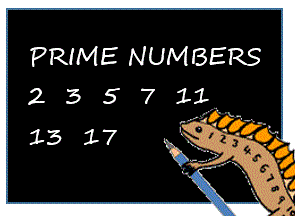
Welcome to our What is a Prime Number? page.
Hopefully all (or nearly all) your questions about prime numbers will be answered here!
There are also links to our prime number charts page and our prime number calculator.
What is a prime number?
- A prime number is a positive whole number that is only divisible by itself and 1.
- Prime numbers must be greater than one.
Another way of saying this is that the only factors of a prime number are 1 and the number itself.
What is a composite number?
- A composite number is a positive whole number that can be made by multiplying two smaller positive whole numbers.
- Every positive whole number, apart from 1, is either prime or composite, and cannot be both!
So a number which is prime cannot be composite, and a number which is composite cannot be prime!.
The First 5 Prime Numbers
If you want to find out what the first 5 prime numbers are and why, then take a look at our First 5 Prime Numbers page.
Prime Number Calculators
Our prime number calculator will help you to find all the factors of any given number and tell you whether or not the number you are looking at is prime or not.
The calculator will also show you your number as a product of primes.
Examples of primes
11 is prime because its only factors are 1 and 11.
17 is prime because its only factors are 1 and 17.
53 is prime because its only factors are 1 and 53.
15 is NOT prime because it has 4 factors: 1, 3, 5 and 15. So 15 is composite.
28 is NOT prime because it has 6 factors: 1, 2, 4, 7, 14 and 28. So 28 is composite.
Prime Number Charts
On our Prime Number Charts page, we have many printable lists of prime numbers.
You can find the first 100 prime numbers, or print out a list of all prime numbers below 10,000.
We also have a prime number calculator which will find all the primes in a range that you set, and also a prime number tester which gives all the factors of a number, and tells you whether it is prime or not.
Is one a prime number?
The simple answer to this question is no.
Prime numbers have many different and interesting properties, which they would not have if the number one was prime.
Therefore, the number 1 was excluded from the set of prime numbers.
So the first prime number is 2.
Can prime numbers be negative?
The answer to this question is no.
All prime numbers belong to the set of natural numbers or positive integers.
Can prime numbers have a decimal or fraction value?
The answer to this question is again no.
All prime numbers belong to the set of natural numbers or positive integers.
They cannot be decimals or fractions.
Are some prime numbers even?
The answer to this question is yes.
However, there is only one even prime number which is 2.
No other even numbers can be prime as they will have 2 as a factor (as well as themselves and one).
What are the first 10 prime numbers?
The first ten prime numbers are...
2 3 5 7 11 13 17 19 23 29
What prime numbers are there between 1 and 100?
All the prime numbers between 1 and 100 are...
2 3 5 7 11 13 17 19 23 29 31 37 41 43 47 53 59 61 67 71 73 79 83 89 97
There are 25 prime numbers between 1 and 100.
What is the ...th prime number?
| What is the ...th prime number? | Prime Number |
|---|---|
| 1st | 2 |
| 10th | 29 |
| 50th | 229 |
| 100th | 541 |
| 500th | 3571 |
| 1,000th | 7,919 |
| 10,000th | 104,729 |
How man prime numbers are there between...
| How many primes between... | Number of Primes | Prime Density (%) |
|---|---|---|
| 1 and 100 | 25 | 25% |
| 1 and 1000 | 168 | 16.8% |
| 1 and 10000 | 1229 | 12.3% |
| 1 and 100,000 | 9592 | 9.6% |
| 1 and 1,000,000 | 78498 | 7.8% |
What this shows is that as the range of numbers gets large, the density of prime numbers gets smaller.
So the prime numbers become more spread out as the numbers get larger.
Are the prime numbers infinite?
So the next question I'm betting you want to know is: "If the prime numbers become more spread out as the numbers get larger and larger, do they eventually stop?"
Well, the answer is no - prime numbers never stop they just get more and more spaced out.
The set of prime numbers is infinite and there are several different proofs to demonstrate this!
One such proof is given here on the primes.utm.edu website.
What does it mean if numbers are coprime, or co-prime?
- Two or more numbers are said to be coprime (or co-prime) if their greatest common factor (or only common factor) is 1.
If you want to see if two or more numbers are co-prime, why not try our Greatest Common Factor Calculator.
Sieve of Erastosthenes
The Sieve of Erastosthenes is a method for finding what is a prime numbers between 2 and any given number.
Eratosthenes was a Greek mathematician (as well as being a poet, an astronomer and musician) who lived from about 276BC to 194BC.
If you want to find out more about his sieve for finding primes, and print out some Sieve of Eratosthenes worksheets, use the link below.
What is prime factorization?
To find out more about prime factorization, including how it works and to look at some worked examples, take a look at our prime factorization support page.
Prime Factorization Worksheets
We have a collection of factor tree and prime factorization worksheets for students aged 6th grade and upwards.
Using factor trees is a great visual way of finding all the prime factors of a number.
We also have some problem solving, riddles and challenges on our Prime Factorization Worksheets page.
Divisibility Rules Charts
If you are looking for some printable divisibility charts to help you learn you rules, then try our range here.
How to Print or Save these sheets 🖶
Need help with printing or saving?
Follow these 3 steps to get your worksheets printed perfectly!
How to Print or Save these sheets 🖶
Need help with printing or saving?
Follow these 3 steps to get your worksheets printed perfectly!
Subscribe to Math Salamanders News
Sign up for our newsletter and get free math support delivered to your inbox each month. Free seasonal math grab pack included.
Return to Free Math Help Online Hub
Return from What is Prime Number page to Math Salamanders Homepage
Math-Salamanders.com
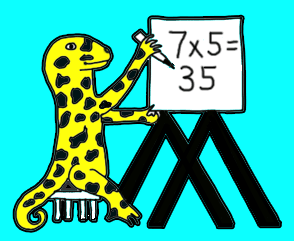
The Math Salamanders hope you enjoy using these free printable Math worksheets and all our other Math games and resources.
We welcome any comments about our site or worksheets on the Facebook comments box at the bottom of every page.
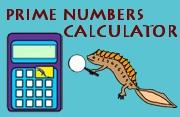
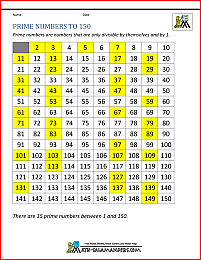
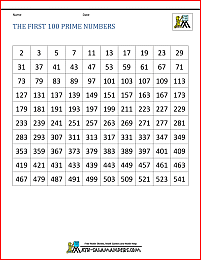

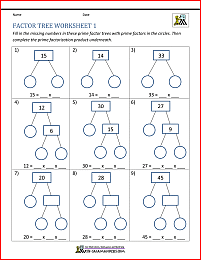
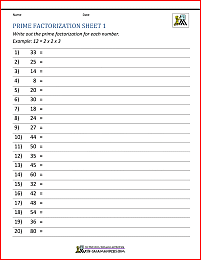


New! Comments
Have your say about the Math resources on this page! Leave me a comment in the box below.